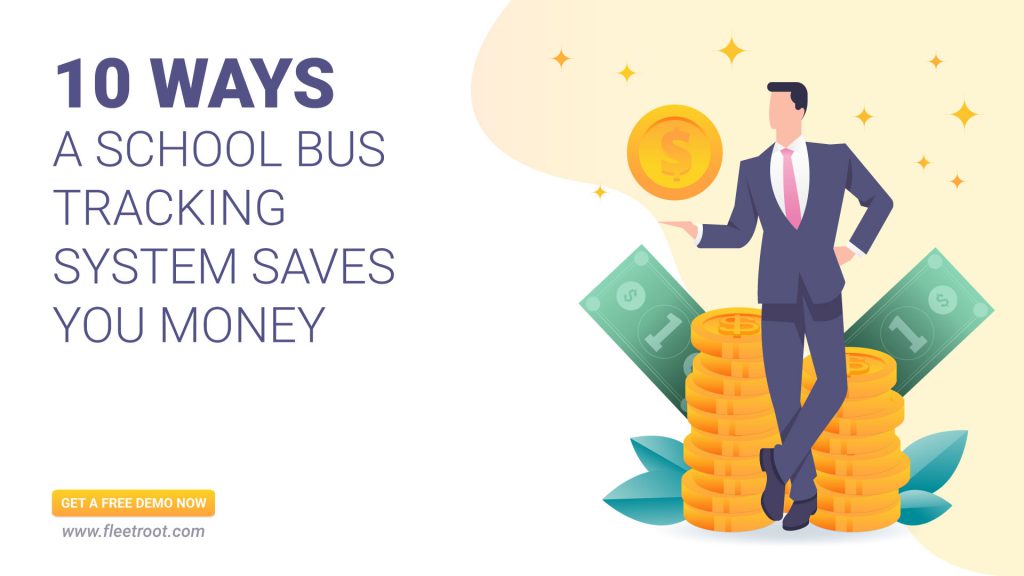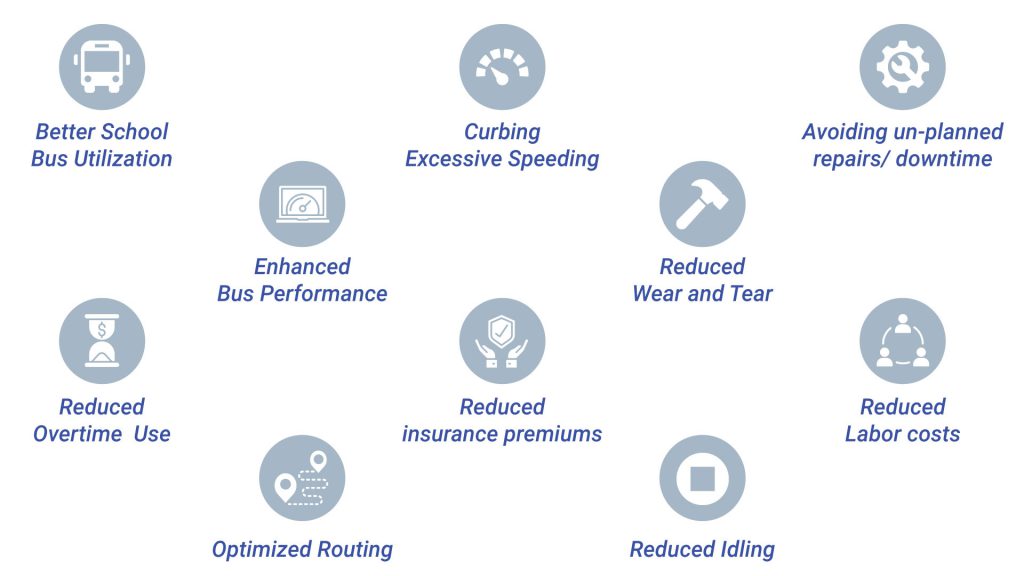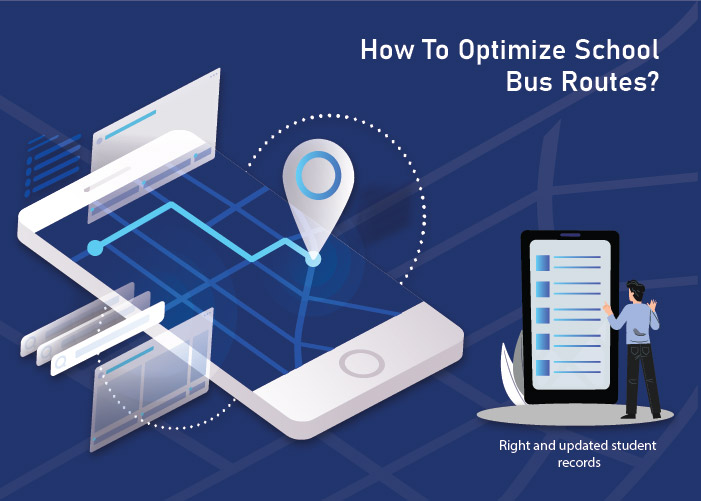
In the interest of child safety and security, many countries are laying down mandates for schools to adopt GPS tracking systems. Recently, CBSE in India issued guidelines for all school buses to have GPS and CCTV cameras.
But even in the face of mounting expectations from school boards as well as parents, some schools are still on the fence. This hesitation is primarily because of budget constraints:
It is expensive enough to maintain a fleet of school buses through the year; budgeting for yet another major expense seems almost impossible to manage.
But did you know that implementing a School Bus Tracking System could actually help you save money?
In fact, the benefits accrued in terms of savings could far exceed the cost. Let’s see how:

1.Optimized Routing:
A GPS tracking solution would bring real time visibility and an automated routing process that is far smarter than a manual process, and quick to respond to changes, viz., addition/ deletion of a student, new roads or residential complexes etc.
This would result in shorter, more efficient routes every day of the week; which means less miles covered, more fuel saved and lower overheads at the end of the month.
2.Better School Bus Utilization:
An additional benefit to smarter routing is elimination of some inefficient routes altogether, as more stops could be accommodated in a single route.
This would result in better capacity utilization of your school buses, and may even result in fewer school buses required than before. Think of the cumulative savings per annum, if a single bus could be reduced from your fleet.
3.Reduced Idling:
An engine idling away is basically fuel down the drain. Just one hour of cumulative idle time could be the equivalent of driving 25 miles -or using up half a gallon of diesel.
However, by providing turn by turn navigation assistance in real time, roads with traffic jams or accidents that would have otherwise caused excessive idling are avoided.
Telematics can also actively monitor arrival and departure times at each stop, and how long the doors are open and closed. Reducing this time helps to reduce idling. Moreover, the system can automatically send alerts to drivers when they idle beyond a set limit.
4.Curbing Excessive Speeding:
Sometimes drivers try to finish the daily beat faster by resorting to speeding, which is not only unsafe, but also has an adverse effect on fuel economy – by as much as 33%.
But with the tracking solution in place, drivers would be instantly alerted before they ended up wasting precious fuel. Over time, drivers learn better driving behavior and become more accountable.
5.Avoiding un-planned repairs/ downtime:
In the daily hustle and bustle, it is extremely difficult to manually keep track of servicing dates for each school bus. And when buses are not serviced on a regular basis, minor issues today could snowball into major breakdowns tomorrow.
But the GPS tracking system can help to schedule preventive maintenance / servicing on a regular basis, and even set up an alert system, so that drivers stick to the schedules and avoid downtime, or more expensive repairs down the line.
6.Enhanced Bus Performance:
Schools could have a number of KPI’s in place for their student transportation system.
Whatever be your KPI’s, GPS tracking and telematics can ensure that you follow a systematic, analytics-based approach to achieving them. E.g., telematics can actively monitor bus equipment to ensure the school bus is in a top working condition, and is delivering the required mileage on a consistent basis.
This translates into less fuel consumed and more savings at the end of the day.
7.Reduced Wear and Tear:
Rash driving behavior and hard braking in particular, leads to rapid engine and tire deterioration if left unchecked. By keeping tabs on driver behavior and setting up alert systems to monitor speeding, harsh braking or abrupt turning, you can safeguard bus equipment and increase longevity as well as resale value of your buses.
8.Reduced insurance premiums:
Insurance companies recognize that GPS tracking systems encourage safer driving practices as well as preventive maintenance, so chances of accidents and breakdowns are less.
Moreover, the GPS devices on board will ensure that school buses are easily located in the unlikely event of a theft. Hence you could get discounts of as much as 15% on your insurance premiums.
9.Reduced Overtime/ Unauthorized Use:
Efficient routing and better time management helps to reduce driver overtime. Also, in a manual system it is not easy to keep a check on drivers who may be using the bus after hours for the personal gains.
But with real time tracking and geofence alerts, school administrators are instantly informed when the school bus deviates from its route or makes unscheduled stops.
10.Reduced Labor costs:
Features such as real time tracking, guided navigation, two-way communication, streamlined procedures for pre and post trip checks and automated school bus attendance greatly simplifies the driver’s job.
This results in better job performance, job satisfaction and better retention rates over the long term, which in turn translates into lower recruitment and training costs.
Conclusion
Thus, adopting a School Bus GPS Tracking System for your fleet will bring unprecedented and far reaching benefits that will not only help you quickly recover your investment but also continually improve the efficiency, reliability and profitability of your operations.
So, what are you waiting for? Call us for a free demo today!


